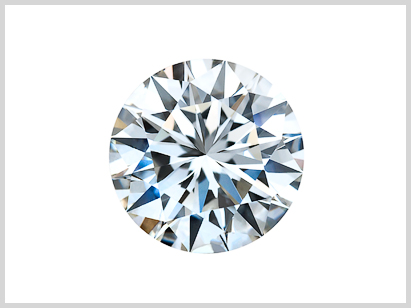Round Diamonds
Round Cut Diamonds and Round Shape Diamonds are the same thing. Round diamonds are cone shaped, have perfect symmetry and generate superior brilliance when compared to all other shapes, as a result over half of all engagement ring buyers select a round diamond as their featured stone.
While much has been written about the optimal depth and table percentages for round diamonds, the conclusive study by the Gemological Institute of America [GIA] clearly indicates that maximum brilliance is produced in Round diamonds with depth and table percentages very close to 60% [with specific pavilion and crown angles].
The study goes on to show minor differences in brilliance comparing depths ranging from 59.7% to 62.9% and tables from 55 to 61%. Within these parameters the difference in brilliance is difficult to detect with the naked eye however deeper stones are less valuable because of their impact on ‘face size’ relative to weight.
Round diamonds typically cost 10-15% more than fancy shapes [other than rounds] because Rounds yield +-45% of the original rough weight whereas Fancy shape diamonds yield +-70%.
Why? After sawing a ‘classic’ rough diamond crystal in half, the cutter is left with two pyramid shape rough stones. In order to produce a Round diamond the 4 corners at the base of the ‘pyramid’ must be polished off resulting in +-35% greater weight loss than if the same stone were to be cut into a square Cushion, Princess, Radiant or Asscher cut.
For over 500 years, diamonds have been presented as the ultimate expression of love and commitment between two people.
We invite you to visit Ascot Diamonds in Atlanta, New York, Charlotte, D.C. and Dallas where in a dignified atmosphere clients receive a priceless education, competitive prices and compare diamonds from ‘the most meticulous diamond inventory in the world.’


